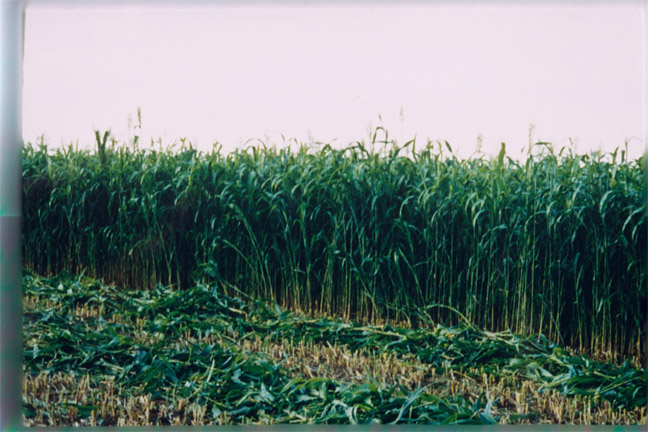
Agricultural News
When Haying Drought-Stressed Summer Annuals, It Pays to be Patient
Wed, 08 Aug 2012 12:42:32 CDT

With forage supplies running short due to the drought, Oklahoma State University Extension Animal Scientist Emeritus Glenn Selk says the temptation to hay summer annuals such as sorghums, millets, and sudan grass hybrids when they green up after a rain may be overwhelming. In an article in the latest Cow-Calf Corner of the Extension newsletter, Selk says it pays to be patient.
A few spotty rain showers may fall even in the midst of heat and drought. They are not the kind to end a drought, but they momentarily cool the air, make the pastures and hay fields look a little greener, and improve farmer and rancher attitudes. In the case of drought-stressed summer annuals such as forage sorghums, millets, and sudangrass hybrids, the rain-shower may be a wolf in sheep's clothing.
Avoid cutting the summer annual hay immediately after a drought-easing rain. Often the highest concentrations of nitrate will be in the first 48 hours after the first rain after an extended heat and drought stress period. Usually it takes the plants at least about a week to return to normal nitrate concentrations if the weather and moisture conditions remain favorable. The drought-stressed plant may again be taking up nitrates from the soil, but not have the enzymes present in great enough quantity to reduce the nitrate on to form amino acids. Amino acids are the building blocks of plant proteins. With time and good moisture conditions the plant may return to normal metabolism and growth, which in turn will cause reduced nitrate concentrations.
However, in the meantime, producers should continue to check the forage with samples sent to a laboratory for quantitative evaluation or conduct the field test with diphenylamine nitrate kits available at most Oklahoma State University County Extension offices. Once the forage is cut, the nitrate concentration will stay approximately the same until fed next winter. Therefore it is imperative to know the nitrate level before the crop is harvested.
Learn more about nitrate toxicity in cattle by downloading the OSU Fact Sheet PSS-2903 Nitrate Toxicity in Livestock by clicking here.
WebReadyTM Powered by WireReady® NSI
Top Agricultural News
More Headlines...




















